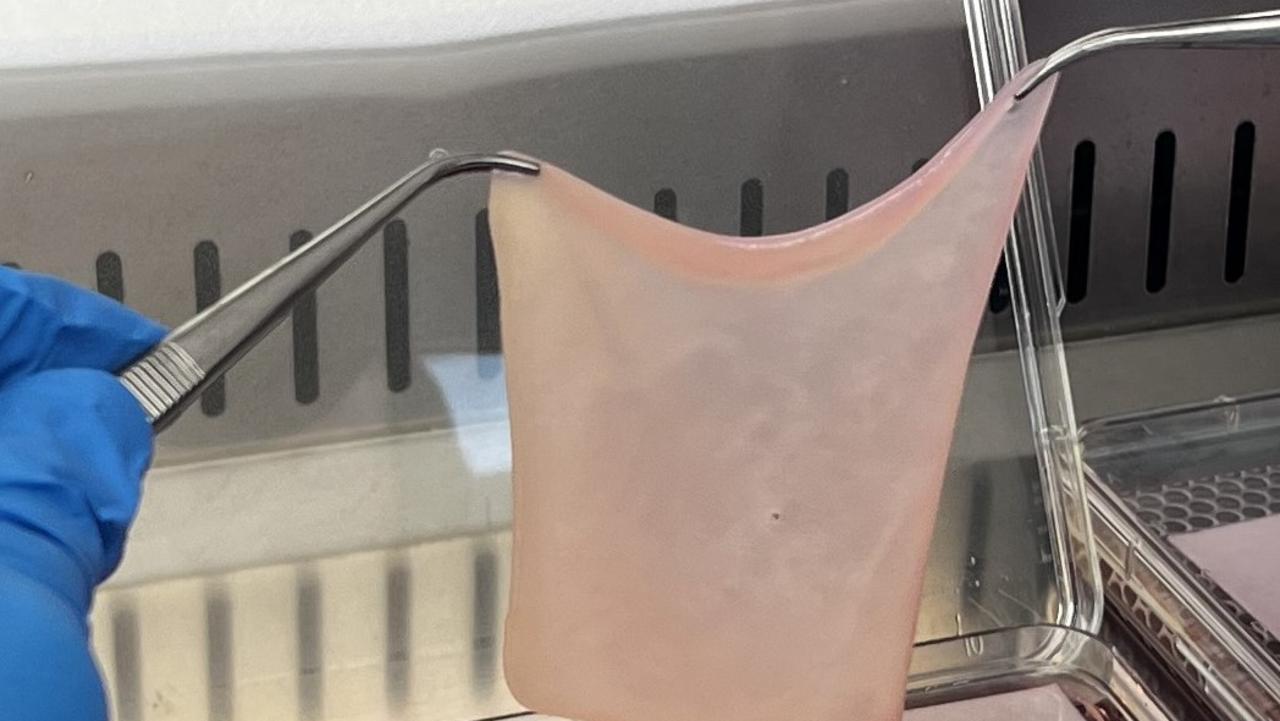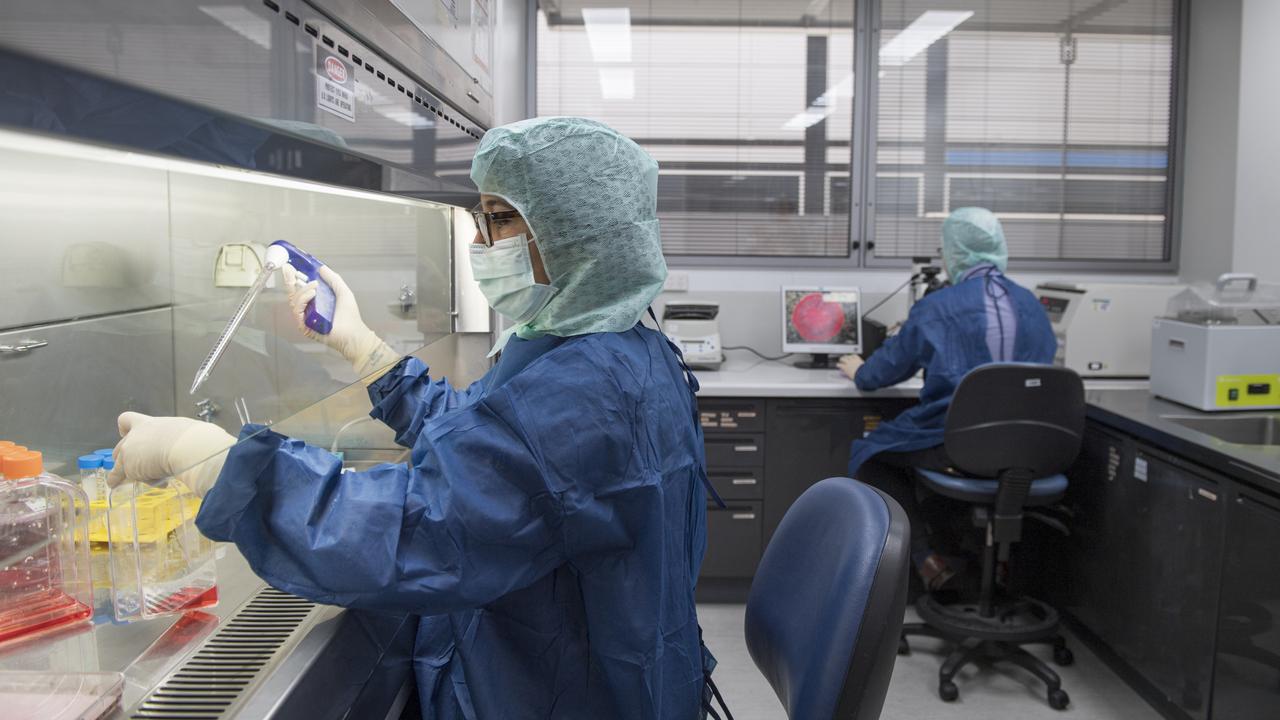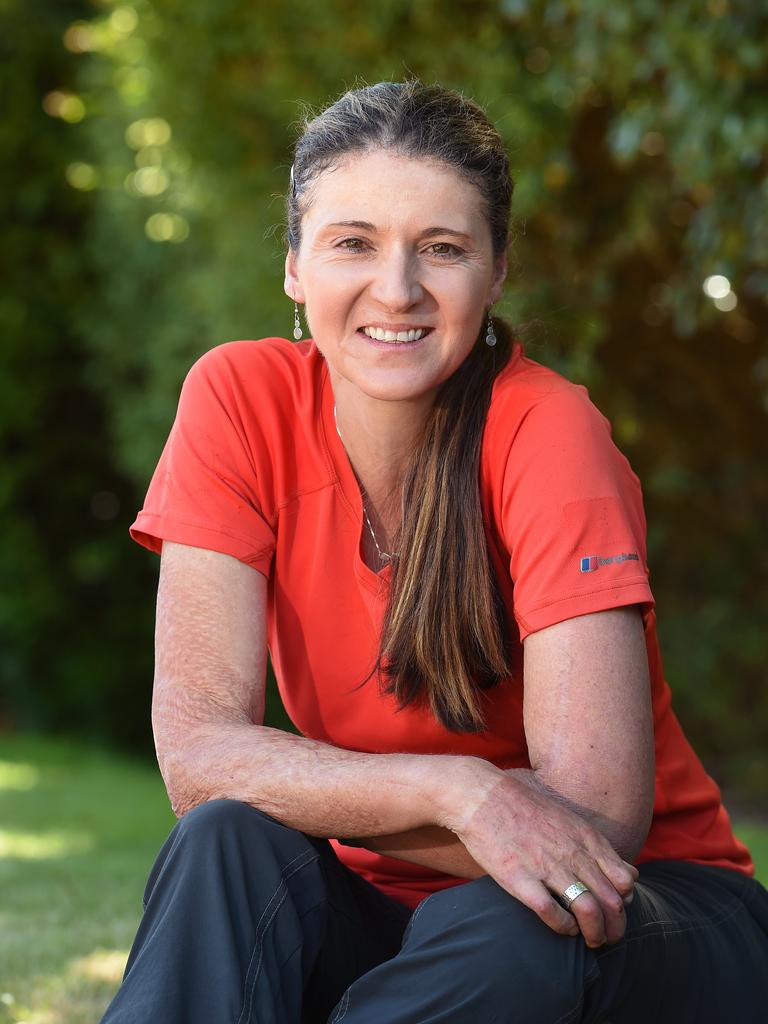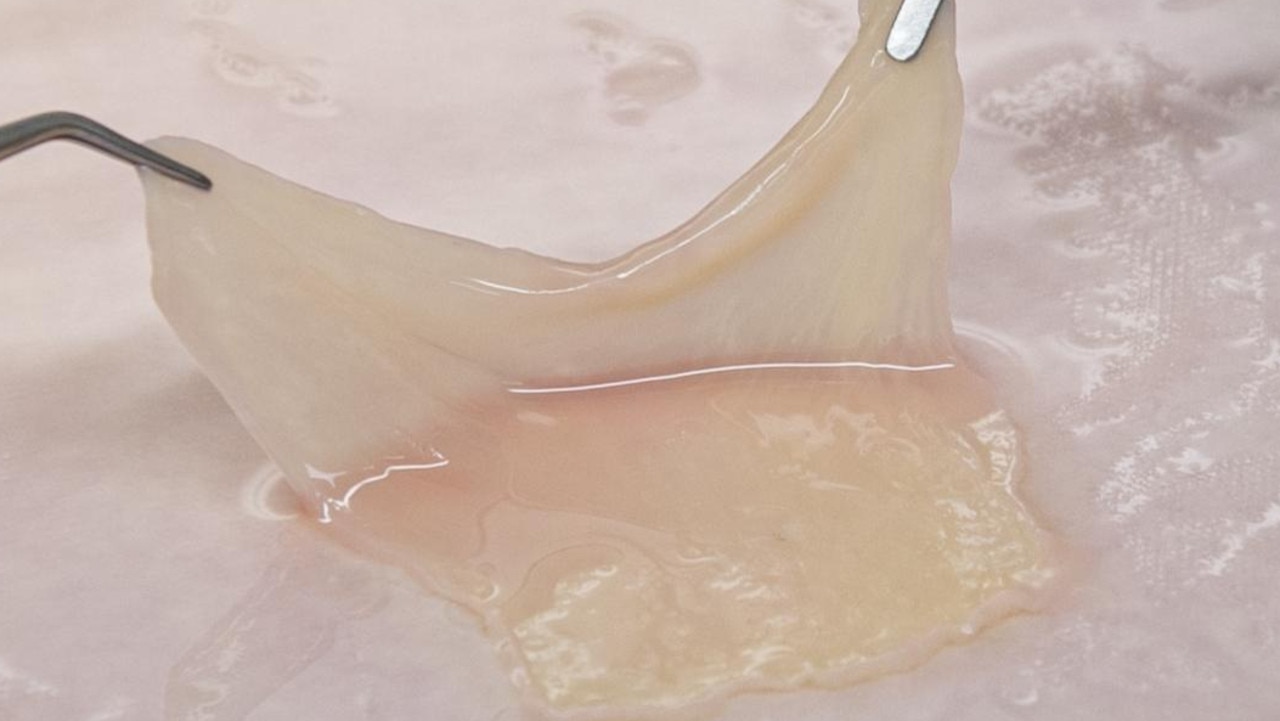Bio-engineered skin used to treat burns in world-first medical trial
In a world-first medical trial, an Australian patient has received human-like skin grown in a lab to treat severe burns – a major breakthrough doctors say could improve healing and save lives

READING LEVEL: ORANGE
Human-like skin grown in a laboratory has been successfully given to a Melbourne burns patient in a world-first trial.
The artificial tissue was grown from the man’s own skin cells, with the procedure described as one of the biggest breakthroughs in burns care in decades.
Reconstructive plastic surgeon Associate Professor Heather Cleland said the tissue had the potential to not only heal patients better than existing methods, but also save those “who would otherwise not survive”.
The bio-engineered* skin aims to replace split skin grafts, where burnt, damaged skin is replaced with a thin shaving of normal, healthy skin from another part of the patient’s body.
This new method could help to better protect patients from deadly infections, without the usual pain, scarring and in some cases, life-threatening delays of traditional skin grafts.
The Alfred and Monash University have spent more than a decade on the project, one of only a few bio-engineered skins in the world and the first of its kind.

The artificial skin replicates the skin’s important top layers* and takes just four weeks to grow into sheets 100 times the size of the initial skin sample taken from the patient, which is slightly larger than a coin.
Associate Professor Cleland, part of The Alfred team, said: “(This) has got the capacity to really, I think, make a huge difference to people with severe injuries, and in particular those with life-threatening injuries and children.”
She said people who survive being burnt but die later on in hospital mostly die as a result of infection from the burns.
“Almost half of burns survivors live with pain and disability caused by scarring and infection, made worse by the need to use traditional skin grafts,” she added.
Former patient Kate Sanderson, 49, who suffered burns to 60 per cent of her body in the 2011 Kimberley Ultra-marathon Fire, said she was “elated*” for the team.
She said her recovery was prolonged* because doctors “could only take limited amounts of skin” for grafting.
“It could have hugely reduced the time I was in hospital,” she said.

HOW DOES THE BIO-ENGINEERED SKIN WORK?
The bio-engineered skin is grown under lab conditions using a sample of cells taken from the patient. Once it has grown to a sheet of skin it is attached to the burnt and damaged tissue of the patient.
The Alfred skin bio-engineering laboratory group leader Professor Shiva Akbarzadeh said they first took and isolated the patient’s skin cells and then combined them with a special hydrogel* that was rich in platelets*, the component in blood that stopped bleeding.
“We expect little scarring of the treated sites long term,” she said.
Prof Akbarzadeh said the new tissue harnessed our “natural wound repairing mechanisms” and “becomes part of the body within a week or so”.
“It closes the wound and creates a barrier against infection and water loss,” she said, adding the breakthrough felt like the “last part of the jigsaw puzzle”
“To bring an alternative to skin grafting, it revolutionises* the major burns treatment,” she said.

HOW DO TRADITIONAL GRAFTS COMPARE?
Assoc Prof Cleland said traditional burns care was “very reliant” on using a patient’s own unburnt skin for grafting, but it was “extremely” painful, caused injury to healthy skin and had limitations.
“For people with severe burn injury … there’s a high ongoing burden* of injury, with particularly scarring and chronic pain*, and also function deficits*,” she said.
She said patients with burns over most of their body had very little healthy skin to use as grafts, which meant they had to stay in hospital for months on end and risked higher rates of infection while using the same donor site* for grafts over and over again.

Each time, they needed “two or three weeks off or sometimes longer” for the site to heal, she said.
In contrast, the laboratory could now grow multiple 10cm by 10cm sheets of artificial tissue – equivalent to a split skin graft but with significantly less scarring – in just four weeks. This is the amount of time needed to prepare a burn for treatment.
HOW THE TREATMENT COULD EVOLVE
Assoc Prof Cleland said that as technology advanced, future research could investigate how to replicate skin’s more advanced components, such as pigment cells* and sweat glands.
The phase one trial, funded by a federal research grant, is expected to continue into 2026, involving a small number of patients most in need. Assoc Prof Cleland said they hoped to get funds for more trials.
POLL
GLOSSARY
- bio-engineered: changing genetic material using lab techniques
- top layers: the skin is made up of three main layers, the epidermis, the dermis and the hypodermis. The top layer, the epidermis, provides physical protection against infection and damage to the delicate internal tissues of the body
- elated: overjoyed and full of happiness
- prolonged: very long and drawn out
- hydrogel: a gel in which the liquid component is water, commonly used in medical and cosmetic products
- platelets: small, colourless cell fragments in our blood that form clots and stop us from bleeding
- revolutionises: completely changes the way things are done
- ongoing burden: puts a heavy strain on someone that lasts a very long time
- chronic pain: pain that lasts for a long time
- function deficits: losing the ability to do things
- donor site: the area of the body where doctors take healthy skin to use as grafts
- pigment cells: cells that give the skin colour
EXTRA READING
Funnel-web drug funded for trials
Breakthrough could ‘melt cancer’
‘Fountain of Youth’ scientific find
QUICK QUIZ
1. How is the artificial skin bio-engineered?
2. What size skin sample is taken from the patient?
3. In what way could it help burns patients?
4. How long does it take to grow the skin?
5. What are some skin components doctors hope to include in the research in future?
LISTEN TO THIS STORY
CLASSROOM ACTIVITIES
1. Funding proposal
The news story ends by stating that “Associate Professor Cleland said they hoped to get funds for more trials.” Imagine that you are one of the researchers on the team and write a proposal to seek this further funding. Your proposal should summarise what the innovation is and how it works, explain the short and long term benefits for patients and state what you hope to achieve with the further funding.
Time: allow 30 minutes to complete this activity
Curriculum Links: English; Science
2. Extension
Research to find out what you should do to administer First Aid for a burn injury. Make a list of what to do and what not to do.
Time: allow 20 minutes to complete this activity
Curriculum Links: English; Health and Physical Education; Science
VCOP ACTIVITY
Summarise the article
A summary can be a really good way to grab the main idea plus some key points in the article as a highlight. Think of the summary like a little advertisement or extract you could use to encourage people to read the article in detail. You want to give them an overview of the article that includes the main idea (being able to tell the audience what the article is about in one sentence), plus a few of the key points of the information.
Remember to re-read your summary to check that it is clear, concise and makes sense to the audience who haven’t read the article yet. You need to make language choices that allow you to explain the information in only a few sentences.

